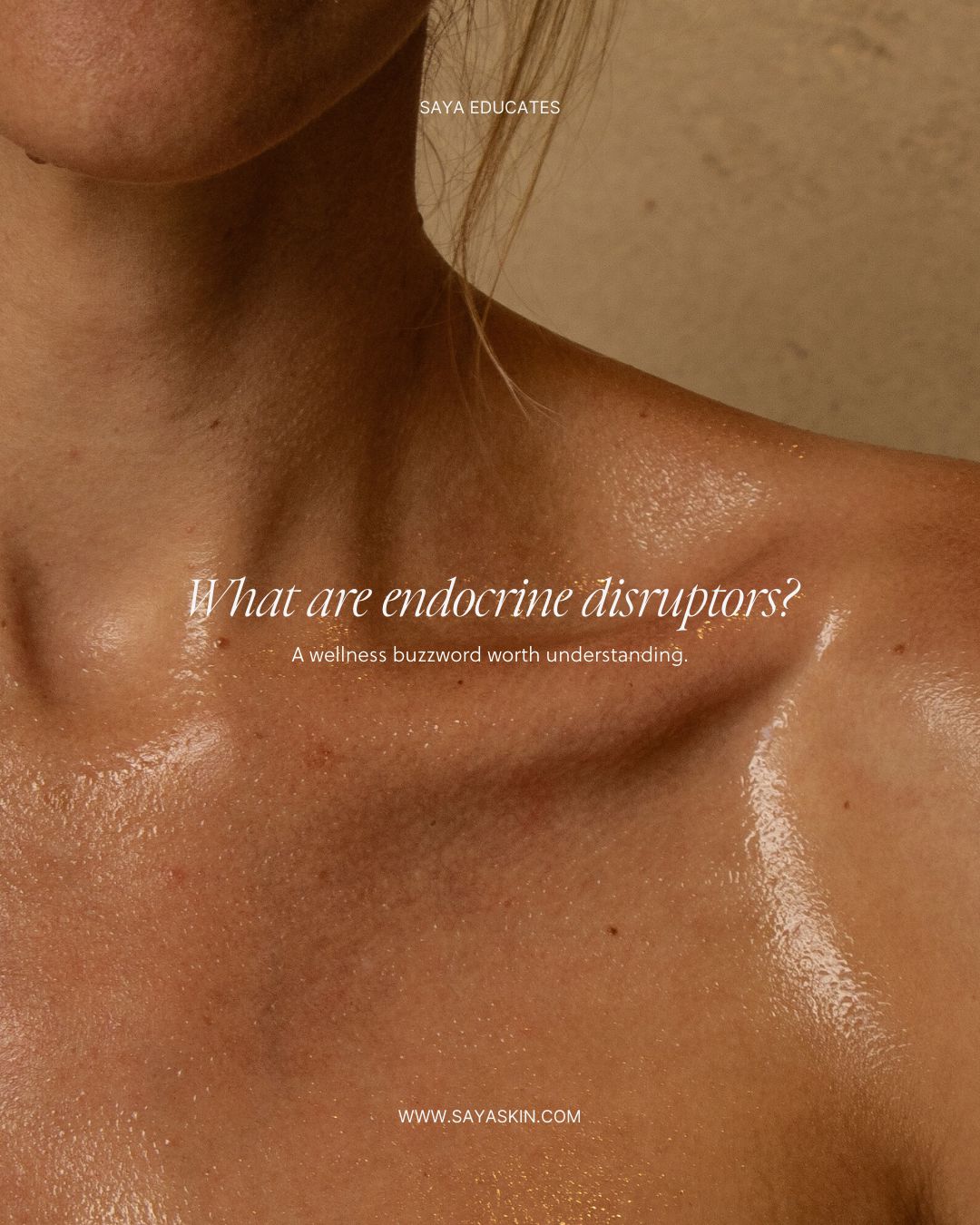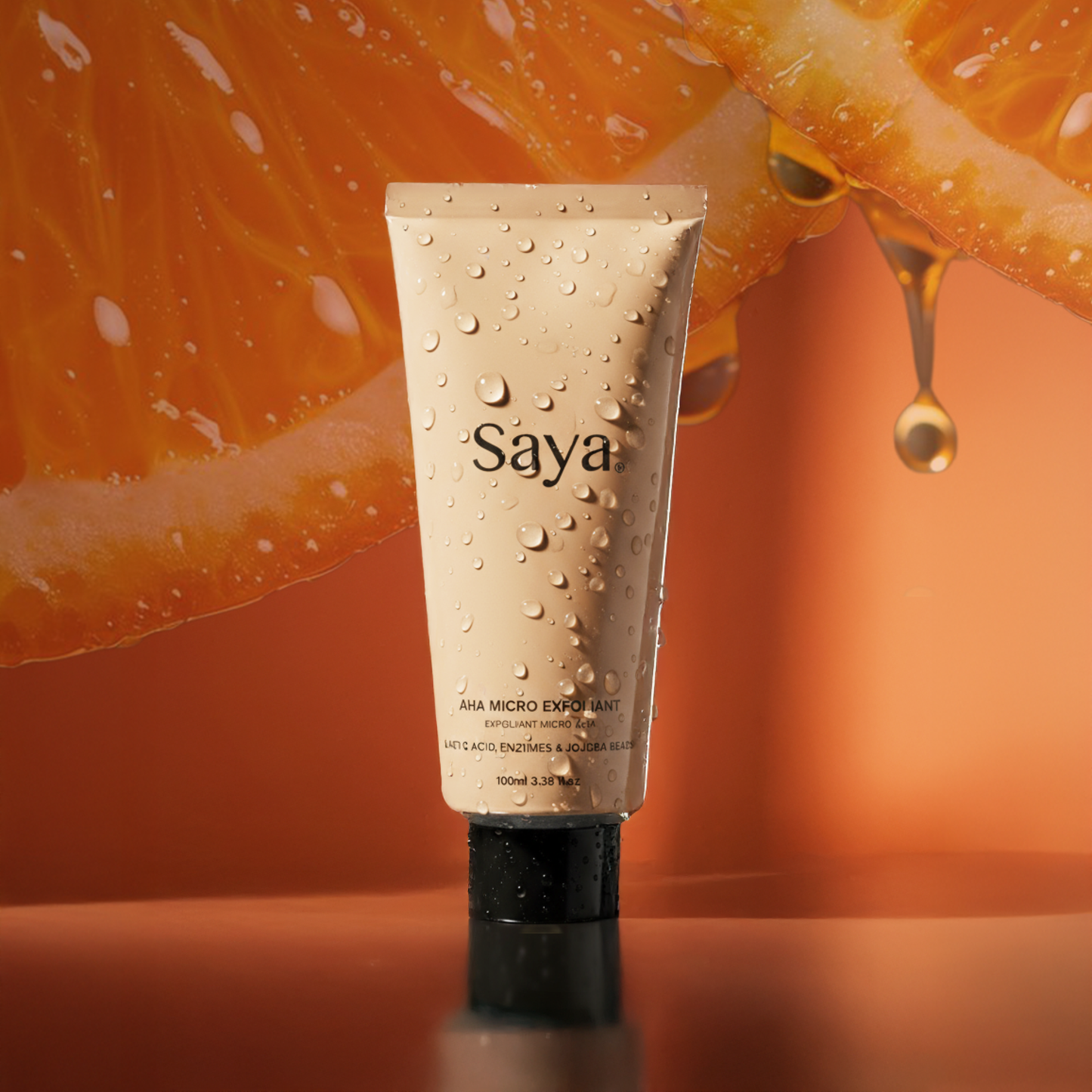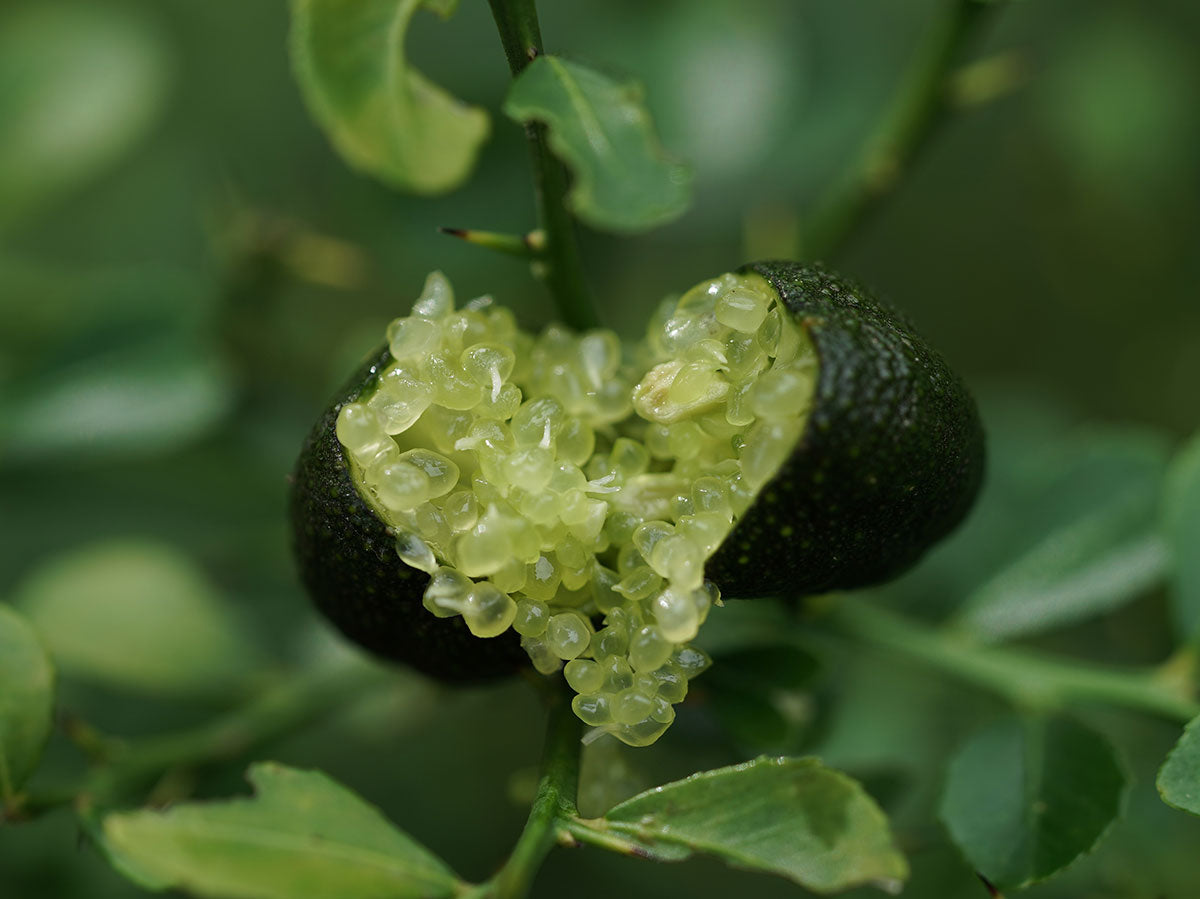
“Endocrine disruptors” might be a buzzword in wellness right now—but at Saya Skincare, it's far from a trend.
Having formulated clean, conscious skincare for over 20 years, we’ve been researching and avoiding these chemicals long before they became a talking point. But with growing awareness, we think it’s the perfect time to break down what endocrine disruptors really are—and why they matter when it comes to your daily routine.
Simply put, endocrine disruptors are chemicals that can interfere with the body’s natural hormone system. And the surprising part? They’re not rare. These compounds can show up in personal care products, synthetic fragrances, preservatives, and even packaging materials—meaning they could be sitting on your shelf right now.
So, what exactly do they do? And how can you avoid them?
Let’s dive deeper.
So, What Are They?
Endocrine disruptors are chemicals that interfere with the endocrine system—the intricate network of glands and hormones that regulates everything from metabolism and immune function to mood, fertility, and development.
These chemicals can mimic, block, or alter natural hormone signals, often at very low doses. As Dr. Leonardo Trasande, a professor at NYU Grossman School of Medicine and author of Sicker, Fatter, Poorer, explains:
“Endocrine-disrupting chemicals act at incredibly low levels, and those small exposures can have lasting and serious consequences.”
Where They’re Found
The alarming part? These chemicals are commonplace. They’re found in synthetic fragrances, preservatives, plastics, and even products labeled “clean.”
Let’s break down the usual suspects:
-
Parabens – Preservatives used to extend shelf life. Parabens mimic estrogen in the body and have been detected in breast tissue. A review in the Journal of Applied Toxicology highlights their link to hormone disruption and potential breast cancer risk:
Read the study
-
Phthalates – Often found in synthetic fragrances to make scents last longer. Linked to disruptions in testosterone and developmental issues. The CDC provides an overview of their usage and potential risks:
CDC on Phthalates
-
Synthetic Fragrance – A single label of “fragrance” can hide dozens (or hundreds) of chemicals, many of which are undisclosed. The Environmental Working Group (EWG) refers to this as a “chemical black hole”:
Not So Sexy: Hidden Chemicals in Fragrance – EWG Report
-
Plastic Packaging – Plastics (especially when heated or aged) can leach BPA (bisphenol A), a potent endocrine disruptor. The Endocrine Society warns that BPA exposure can lead to cancer, infertility, and metabolic disorders:
Endocrine Society Report

The Real Impact
Endocrine disruptors don’t always show their effects immediately—which is exactly what makes them so harmful. Over time, they can contribute to:
Thyroid dysfunction
Menstrual irregularities
Early puberty
Lower sperm count
Fertility issues
Increased risk of hormone-sensitive cancers
Even more concerning: low doses still matter. "When we slather on products laden with harsh chemicals and synthetic fragrances, we disrupt this delicate barrier, potentially leading to absorption of harmful substances into the bloodstream."
— Amelia, Clinical Naturopath
How to Avoid Them
This isn’t about fear—it’s about informed choices.
The average woman uses 12 personal care products daily, exposing herself to over 160 unique ingredients—many of which haven’t been thoroughly tested for safety. The EWG’s Skin Deep database offers insights into this:
EWG Skin Deep
Here's how to protect yourself:
-
Avoid anything ending in -paraben (e.g., methylparaben, propylparaben)
-
Be wary of “fragrance” or “parfum” unless it's clearly listed as essential oil-derived
-
Choose products in BPA-free, glass, or aluminum packaging
-
Use apps like Yuka or EWG’s Healthy Living to scan products instantly
Where Saya Stands
At Saya, this is more than just a marketing trend—it’s foundational to how we formulate.
Our products are 100% free from known endocrine-disrupting ingredients: No parabens, no phthalates, no synthetic fragrance.
We also use packaging that’s safer for you and the planet: Bioplastic made from sugarcane, Glass where possible, aluminum for its endless recyclability.
We choose transparency, always. Because self-care should support your health—not compromise it.
Final Thoughts
This isn’t about being perfect. We all encounter toxins in our environments—some beyond our control. But where we can make better choices, we do. And skincare? That’s a beautiful place to start.
So read the labels. Ask the questions. Take your time.
And if you’re not sure where to begin?
The entire Saya Skincare range is a safe place to land.



